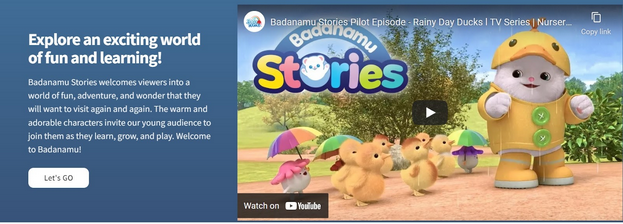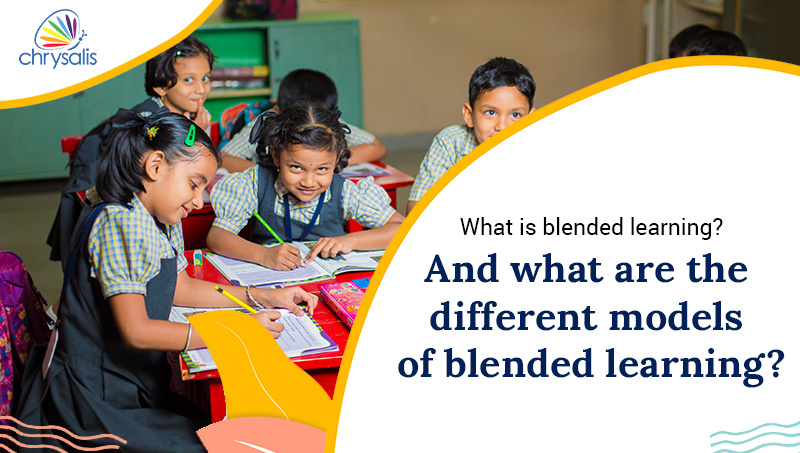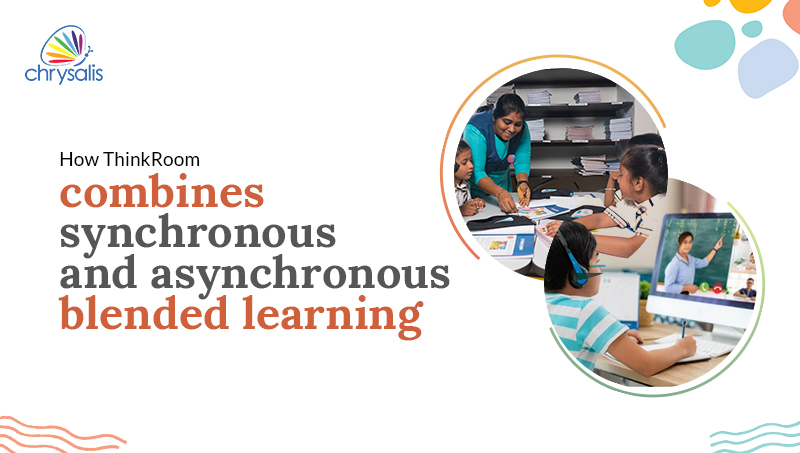Blended learning is a unique approach that combines classroom learning with online learning. It brings innovation to the classroom by equipping teachers with new-age digital learning tools. Using multimedia visuals and interactive activities, educators and teachers make overall learning experiences interactive and fun for students. There are different models of blended learning. Regardless of which model you employ at school, a good blended learning programme such as our ThinkRoom Programme should have the following attributes:
- Content that encourages better student engagement .
- Activities promotes development cognitive and social skills
- Interactive activities that are aligned with learning outcomes
- At-home activities that allow students to study the material at their own pace.
- Ample opportunities for students to collaborate and work together
Different models of blended learning:
- Rotation model: In this model, it is for the educator to decide how much time is spent in face-to-face learning and how much is spent online. The teacher rotates between a number of different learning activities such as one-on-one time with the teacher, peer group interactions, teacher-led lessons, or independent study time. Rotation model is applicable for students learning on a school campus, in a classroom with their teacher.
- Flipped classroom: It is perhaps the most widely known type of blended learning. A flipped classroom model involves students to complete readings offline (at home). However, the live class (be it online or in-class) focuses on problem-solving. This way, the traditional classroom roles are reversed. This style of teaching involves more activities, discussion and collaboration in the class. Traditionally, what was earlier considered homework is now done in the class.
- Virtual blended learning model: This is also known as enriched virtual learning model because most learning takes place virtually. This model allows students to learn and complete coursework online remotely. This is supplemented by in-person learning sessions that are provided from time. This is different from online learning as face-to-face learning is a required component of the coursework, not optional as it is in full-time virtual schools.
- Flex model: As the name suggests, the flex model offers a lot of flexibility to students as far as the pace of learning is concerned. Students mainly learn online at their own pace but in a physical classroom Even as students have a fluid schedule, the teacher is available on- for guidance. The teacher provides face-to-face support on a flexible and adaptive as-needed basis.
- A la carte model: In the a la carte model, students pick and choose courses to take online as a way to supplement existing course load at their school. This model is most commonly found at the high school level, where students choose to enroll for courses not offered by their school. For instance , some students may opt for advanced placement courses or language courses that are not offered by the school.
Want to know how our ThinkRoom Programme can help your school, teachers and students?
The curriculum of our ThinkRoom programme is a unique blended learning approach that helps teachers and educators to explore students’ maximum potential. No matter which blended learning model you choose, our ThinkRoom Programme can help you transform your school’s curriculum and help students excel in academics and in life, schedule an appointment.
We give you the tools to convert your content into an interactive digital format





